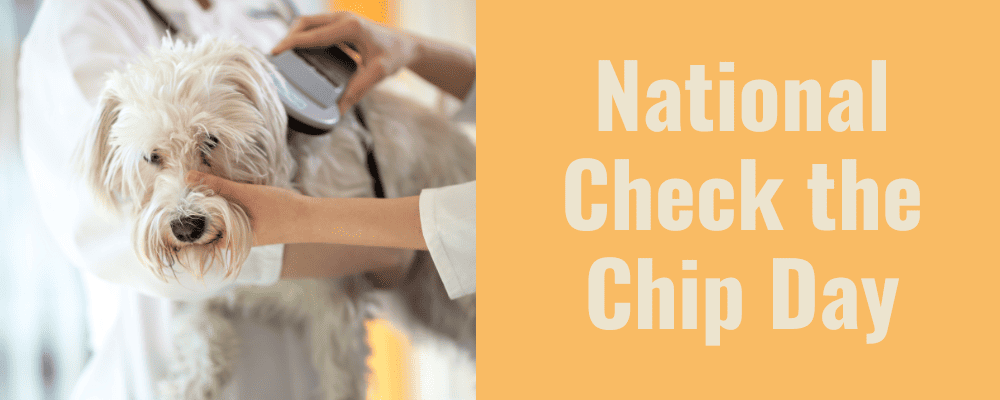There’s no denying that pets are a part of the family. If something were to separate them from you – a door left open, your dog slips out of its collar or your cat takes an unintentional (or sometimes intentional) hiatus from your family – you’d want a way to reunite with them. Microchipping is a painless, safe, and easy way to exponentially increase the chances of your pet’s protection and return to you.
Why you should chip
There are many situations that can separate a pet from their owner and odds are it will happen at least once in your time together.
Collars and tags can be physically removed when a pet gets lost or stolen, but a microchip is tamper-proof and makes it nearly impossible to permanently lose a pet. Although microchips can’t tell you where your pet is (it doesn’t have GPS capabilities), it does alert when it is scanned. Most people who rescue animals off the streets know to bring them to a vet or shelter. From there, the first thing a veterinarian or shelter employee will do is a check for a microchip, which is why it is so important to chip your pet. Microchips also last a lifetime and only need to be updated with your current information whenever it changes, such as when you move or change your phone number. For quality assurance, have your vet check it once a year to make sure it is still in place and working properly.
How it works
Inserting a microchip is as easy as giving your pet a shot. It’s a small electronic chip in a glass cylinder that is injected by a hypodermic needle. Once inserted by your veterinarian – under the skin and between the shoulder blades – it is imperative that it is registered with the manufacture. Without registering the microchip, the ID number on it is essentially useless. Once registered, the manufacturer will assign the unique ID number to your pet. You can go online to their database and update your contact information if needed. If your pet gets lost or taken to a clinic or shelter, once scanned you be contacted according to the information you have provided in the database.
Don’t delay – get the chip today!
Microchipping gives the greatest possibility of getting your pet back should they get lost or stolen. Stories of pets found due to their microchip are in the news regularly. It’s such a simple, cheap process that there really is no reason not to take advantage. There is no maintenance necessary beyond registering it and providing your information and it offers endless peace of mind if the unthinkable were to happen and you couldn’t find your pet.
If your pet is microchipped:
Check your pet’s registration information in the microchip manufacturer’s database to ensure all contact information is current. To do this, you will need to contact the manufacturer of your pet’s microchip through their web site or by phone and give them your pet’s microchip number.
If you do not know the manufacturer of your pet’s microchip, the American Animal Hospital Association’s Universal Pet Microchip Lookup Tool, Petmicrochiplookup.org can help. This internet-based application is linked to the registries of the majority of microchip manufacturers and allows a quick database search of any microchip made by these manufacturers. Simply enter your pet’s microchip number and the application will generate the name of the manufacturer. Don’t know your pet’s microchip number? We’re happy to help! Simply bring your pet to the hospital and we will scan him/her for you.
If your pet is not microchipped
Did you know we offer microchipping? To get your pet microchipped is pretty simple here at AMC. The appointment is scheduled with one of our veterinary technicians. Make an appointment with us! It only takes a few minutes and we can register your pet immediately. Call us at (321) 727-2421.
